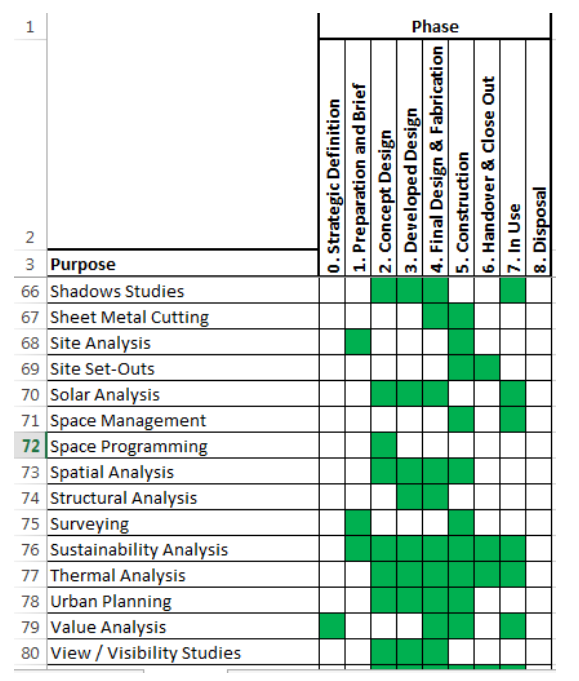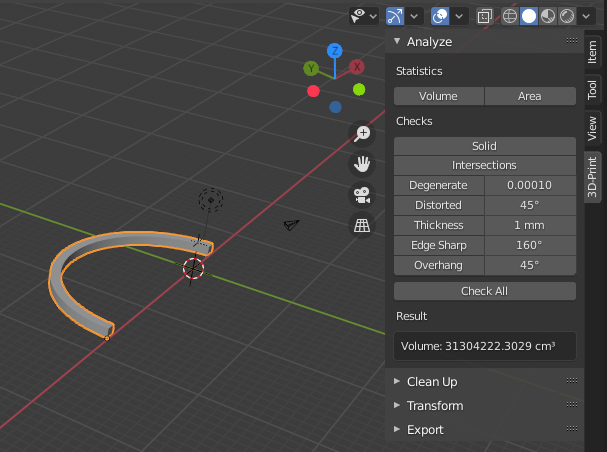Sometimes it's good to be 0 or 1, but not always :)
Also, I'm not responsible for what you do, if I think you go a wrong way, it's not my duty to say, but unfortunately I "try" to say
I think I should let you all experience yourselves, wrong or right
I believe we all agree that everybody should be motivated to say his opinion @ReD_CoDE, after all that is one of the scopes of this group, to transfer knowledge, vision and perspective for anything that has to do with the built environment.
I find much less constructive, though, personal critiques on choices people make regarding what and how they want to go in the development of the projects they work in. In my view, the only way to show another road is to walk through it and show the way with another paradigm that will illuminate other members to follow it and believe it. To do that it is probably needed some sort of PoC, an example that can explain this different perspective, especially if just narrating it does not make people "click".
I totally agree with you @Jesusbill, however, sometimes introducing some ideas and solutions as small steps like PoC can kill that idea/solution
However, personally try help as much as I can
I'm not a programmer, and I think a good community doesn't need just programmers, there should be people who can give vision and show some new perspectives to achieve
We are all here to don't do what some other solutions do, as business as usual
Do you remember this table/matrice about Project Management?
We are all here to don't do what some other solutions do, as business as usual
It is fine to do what other solutions already do, but with open-source tools, and it is fine to try and do new things as well.
At this early point I feel it is important to develop practical tools that can attract more people in the open-source world, we need some traction and active users that start to use the tools in their every day world solving their problems.
For example the title of this thread asks about a "real BIM" and not about a "Next-Gen BIM".
It can be important, given that the case of developing practical tools is somehow covered, to work on R&D/visionary/more abstract projects (for example on what the Next Generation of BIM could look like) but it may be difficult to do so here with the limited resources everyone has available and with a diverse set of experiences, way of thinking and doing, etc.
Of course, everybody in his own developments and in the collaboration with the other members is bringing his own innovation either small or big in the world of open-source software.
The mistake is here I think, you all think I talk about "Next-Gen BIM" but in reality, those are "Real BIM" that are happening in the industry but few experience them and if we can't match ourselves with these movements during the time all will call us and our solutions "traditional"
Do you know why the majority of FOSS projects fail after 4-5 years? Because they less think and more code
My advice to Dion from the first day was: "Don't think like a programmer, programmers have a small view angel, and most of the times can't see the whole picture, because always focus on a small piece the picture"
You saw that table, because I shared this table with you before
@ReD_CoDE
Do you know why the majority of FOSS projects fail after 4-5 years? Because they less think and more code
Most open source project fails because of the lack of proper incomes, in facts there are less than 20 foss projects where devs can make a decent living.
It's not only about code, but documentation, support and ability to provide polished solutions, and if we fails to provide such basic things to users, traction will be low.
So let's face it, without a way to generate incomes to make it possible to professionalize dev and support, the whole initiative will never reach professional audience at large scale.
Back to the topic on BlenderBIM addon. I think @Moult has concrete reasons to implement it. He's made a quite clear roadmap that shows his view and also plan to realize it. It's obvious that he concentrates on the data aspect of BIM, when most of the questions in this thread is concerning geometry. Blender is free and opensource. It could be customized however you want, even change the modelling technique to NURBS or CSG or anything (if you were able to). @Moult chose Blender because of its opensource nature and existing features. He's constantly finding solutions to deal with documentation and QTo (which might be difficult because of the meshes, but not impossible). I think until the addon come to the first official release, we all would wait and do nothing, or test it, or make a pull request, rather than add up questions about its feasibility. I can see many of its uses in the roadmap. I'm sure it's possible to make it. I haven't been able to contribute to it, but I support its development.
One example of the QTo problem:
This is a half-circular beam with 10-meter radius (to the beam centerline) and 1mx1m cross section, modeled in Revit. Revit volume is 31.416 m3.
I exported to ifc and used BlenderBIM addon to import it. Blender volume is 31.304 m3.
The difference alone is quite small (0.35%) but it adds up if we take a project under consideration.
This is also due to exporting to IFC 2x3 that makes curvature elementss geometry approximate.
I tested it again with IFC 4 export and re-import into Blender. This is the result:
As you can see, Blender volume is now 31.413 m3. That's an acceptable approximation in my opinion, despite the fact that Revit has not been certified for IFC4.
Comments
Sometimes it's good to be 0 or 1, but not always :)
Also, I'm not responsible for what you do, if I think you go a wrong way, it's not my duty to say, but unfortunately I "try" to say
I think I should let you all experience yourselves, wrong or right
I believe we all agree that everybody should be motivated to say his opinion @ReD_CoDE, after all that is one of the scopes of this group, to transfer knowledge, vision and perspective for anything that has to do with the built environment.
I find much less constructive, though, personal critiques on choices people make regarding what and how they want to go in the development of the projects they work in. In my view, the only way to show another road is to walk through it and show the way with another paradigm that will illuminate other members to follow it and believe it. To do that it is probably needed some sort of PoC, an example that can explain this different perspective, especially if just narrating it does not make people "click".
I totally agree with you @Jesusbill, however, sometimes introducing some ideas and solutions as small steps like PoC can kill that idea/solution
However, personally try help as much as I can
I'm not a programmer, and I think a good community doesn't need just programmers, there should be people who can give vision and show some new perspectives to achieve
We are all here to don't do what some other solutions do, as business as usual
Do you remember this table/matrice about Project Management?

No I haven't seen this table before to be honest.
It is fine to do what other solutions already do, but with open-source tools, and it is fine to try and do new things as well.
At this early point I feel it is important to develop practical tools that can attract more people in the open-source world, we need some traction and active users that start to use the tools in their every day world solving their problems.
For example the title of this thread asks about a "real BIM" and not about a "Next-Gen BIM".
It can be important, given that the case of developing practical tools is somehow covered, to work on R&D/visionary/more abstract projects (for example on what the Next Generation of BIM could look like) but it may be difficult to do so here with the limited resources everyone has available and with a diverse set of experiences, way of thinking and doing, etc.
Of course, everybody in his own developments and in the collaboration with the other members is bringing his own innovation either small or big in the world of open-source software.
The mistake is here I think, you all think I talk about "Next-Gen BIM" but in reality, those are "Real BIM" that are happening in the industry but few experience them and if we can't match ourselves with these movements during the time all will call us and our solutions "traditional"
Do you know why the majority of FOSS projects fail after 4-5 years? Because they less think and more code
My advice to Dion from the first day was: "Don't think like a programmer, programmers have a small view angel, and most of the times can't see the whole picture, because always focus on a small piece the picture"
You saw that table, because I shared this table with you before

Most open source project fails because of the lack of proper incomes, in facts there are less than 20 foss projects where devs can make a decent living.
It's not only about code, but documentation, support and ability to provide polished solutions, and if we fails to provide such basic things to users, traction will be low.
So let's face it, without a way to generate incomes to make it possible to professionalize dev and support, the whole initiative will never reach professional audience at large scale.
@stephen_l happy see you here and I couldn't agree more
Back to the topic on BlenderBIM addon. I think @Moult has concrete reasons to implement it. He's made a quite clear roadmap that shows his view and also plan to realize it. It's obvious that he concentrates on the data aspect of BIM, when most of the questions in this thread is concerning geometry. Blender is free and opensource. It could be customized however you want, even change the modelling technique to NURBS or CSG or anything (if you were able to).
@Moult chose Blender because of its opensource nature and existing features. He's constantly finding solutions to deal with documentation and QTo (which might be difficult because of the meshes, but not impossible). I think until the addon come to the first official release, we all would wait and do nothing, or test it, or make a pull request, rather than add up questions about its feasibility. I can see many of its uses in the roadmap. I'm sure it's possible to make it. I haven't been able to contribute to it, but I support its development.
One example of the QTo problem:

This is a half-circular beam with 10-meter radius (to the beam centerline) and 1mx1m cross section, modeled in Revit. Revit volume is 31.416 m3.
I exported to ifc and used BlenderBIM addon to import it. Blender volume is 31.304 m3.
The difference alone is quite small (0.35%) but it adds up if we take a project under consideration.
This is also due to exporting to IFC 2x3 that makes curvature elementss geometry approximate.
I tested it again with IFC 4 export and re-import into Blender. This is the result:

As you can see, Blender volume is now 31.413 m3. That's an acceptable approximation in my opinion, despite the fact that Revit has not been certified for IFC4.